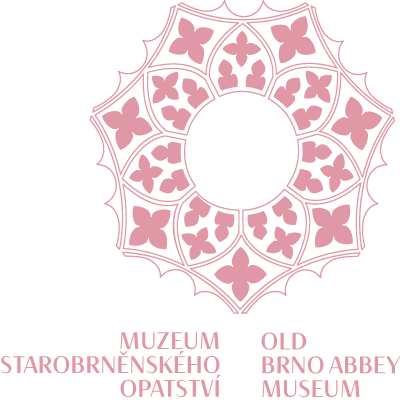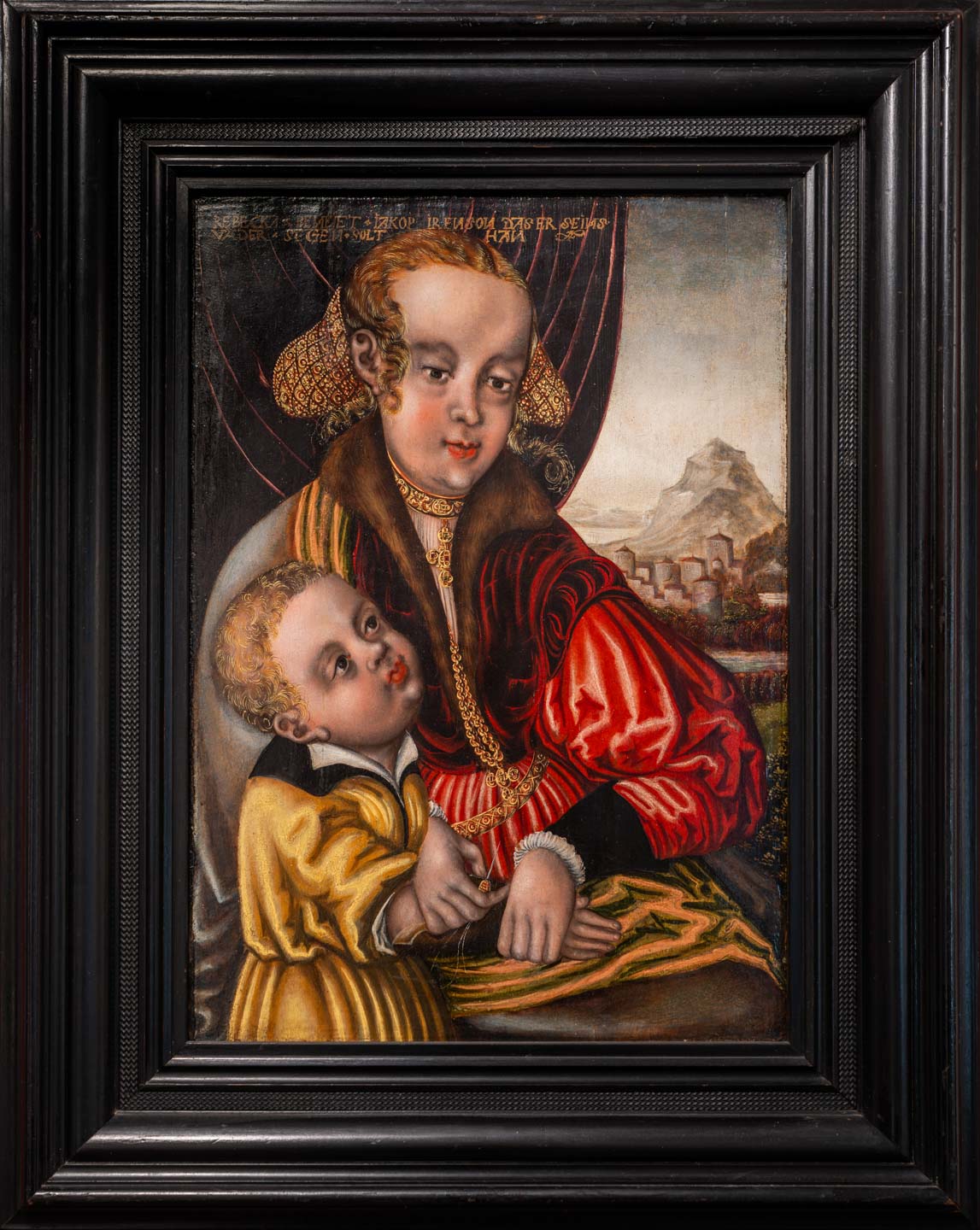Rebecca and Jacob
Lucas Cranach | oil, wooden panel
In the foreground, the painter has captured Rebecca, in a richly decorated dress, complemented by expensive jewels and a costly headdress. Little Jacob winds his way towards her, his hand held by her, while he gazes intently at the needle, having just sewn the skin on his son before the boy goes to receive his father’s blessing. Her expression also reflects a certain fear and shame that comes from her actions. Rebekah and Jacob are about to trick the blind Isaac into bestowing the birthright blessing on Jacob instead of Esau. The theme is based on an Old Testament story (Gen. 25-35) and carries with it a moral exemplar. The drapery creates a natural divide between the intimate scene and the outside world, which is recalled by a view of a composed urban landscape with a mountain range and a body of water in the background. The painter has very successfully captured the aerial perspective. Similarities can be found in the modelling of the figures and the compositional design with the work of Lucas Cranach Sr, who was one of the leading painters and printmakers from the countries beyond the Alps at the beginning of the 16th century. His patrons included influential figures of Europe at the time. He became court painter to the Saxon Elector Frederick the Wise and his successors. He also worked for Maximilian I and Charles V, Cardinal Albrecht of Brandenburg and many others. He was a close friend of the reformer Martin Luther. Cranach is remembered as the main artist of the Reformation. He painted altarpieces, Lutheran-themed paintings and portraits, as well as mythological decorative works and nudes. The year 1505 was a turning point for Cranach, when he entered the service of the Saxon electors in Wittenberg. Here he built a prosperous workshop, became a councillor (1519), and even held the office of purgrim (1537, 1540). After his departure for Weimar (1552), his sons Hans and Lucas the Younger followed their father’s success.

